What we learned at Villa Park
Comparing Jorginho with Partey, dissecting the second Villa goal, looking at Vieira's angles, and other dubious analysis from the gripping 4-2 romp that was never in doubt
We are all prisoners of the moment, and the last week has been filled to the brim. The news that Partey was out. The Tomi underhit. The Saka penalty. The dazzling displays against Bald Goliath. The disappointment from the late mistakes. The feeling of dread after conceding two first-half goals at Villa. The brilliant Saka and Zinchenko strikes to level it.
Now, of course, we are left with the two most uproarious of them all: the Jorginho banger off Emi’s dome (Jorginho ended the day with 0 shots on target, by the way — never trust a stat), and the Martinelli walk-in to wrap it up 4-2. Much has been said about the left-winger stretching his arms in celebration before even scoring. Not enough has been said about how he didn’t even watch it go in:
The final goals felt restorative, not least of which to the #vibes of the club and those of us who follow it. Not too long after these heroics, the good news continued flooding in. Both Newcastle and Man City had dropped points.
If we’re prisoners of the moment, it’s not a bad cell to be in at present.
Let’s dive in.
Jorginho is his own player
Speaking of delicate moments, a polite person would say that emotions were high after news of a potential Jorginho signing broke.
The day of the news going official, we wrote all about how he fared in D.U.E.L.S., and shared some upbeat thoughts on how he may perform in the months ahead. Here was the TL;DR at the end:
Many things about Jorginho can be true at the same time. He’s slow. He’s active and reliable. He’s an excellent controller, turner, and varied passer, with just about the best skills on the market there. He can get worked around, but dives into challenges at 5+ times more per game than Sambi, and like Tielemans, his slowness leads to a couple memorable moments that are then given disproportionate focus compared to his overall defensive contribution (and he’s more 6-y than Tielemans). He’s still misunderstood, and impressions of him are often guided by emotions (which is fine, it’s football). He’s not as fun as Caicedo. He’s lackluster aerially. His leadership and coach-on-the-pitch communication skills are likely to be a big boon for a young team, just as they were with Zinchenko and Jesus. But overall, I can’t shake the feeling that Jorginho playing in a first-place team that dominates settled possession, and is supported by a 2-3 (or 3-2) “rest defence” with White, Saliba, and Gabriel all marauding around him, may have serious potential.
A little after posting that, I remembered that Stats Perform did a big article on Thomas Partey that was, in many ways, a comparison with Jorginho at Chelsea. It included plenty of analytics that aren’t usually available to the layman, and had a few interesting nuggets, including:
Partey is faster and sprints more often, of course, but Jorginho actually covers more ground (11.1km to 10.4km)
They're available for passes at about the same rate, but Partey's teammates have passed to him more
Partey passes to the most threatening teammate 52% of the time (compared to Jorginho at 47%); Jorginho goes to the safest 60% of the time (compared to 50% by Partey)
It was quite the week for the new signing. On Wednesday, he was arguably Arsenal’s best player in an enormously challenging first start for his new club. On Saturday, he won Man of the Match. The vote was understandably influenced by the type of goal that we’ll watch in comps in our brain chips a decade from now. Here’s a picture worth framing:
But aside from the strike itself, Jorginho’s game was hardly aberrational, or even particularly perfect by his standards. This is reason for celebration. This was just him doing what he does, and broadly speaking, we can expect more of the same.
Let’s dive in to a few moments.
Early on, Jorginho showed how he compares to Partey in defensive transition, and the results aren’t always pretty. Within a minute, he couldn’t reach an attainable ball flicked over his head in transition.
In the fifth minute, Villa had their first goal. It didn’t feel great to watch. Cash poked the ball away from Zinchenko, and moved the ball forward into space. At this point, the Arsenal shape requires a certain kind of defending in the midfield. With a player or two behind you, you hassle, annoy, unbalance, tackle, delay, tactical foul: do whatever it takes to unsettle the counterattack, even if for only a second or two. Zinchenko is trying, but the ball is already past him.
Because of his lack of speed, Jorginho takes a passive angle to the ball that kind of shades toward Watkins:
…and he’s left clogging a passing lane that doesn’t really exist. Unbothered, Cash hits it over the top to Watkins who has a perfect finish against Saliba and Ramsdale, both of whom could have done a pinch better:
In a similar situation, it’s easy to picture what Partey may have done: galloped across the field and unsettled Cash. This was not to say the goal was on Jorginho. He was one of five players who could have done better on this one, and the margins were still tiny for Villa to score it. But Partey is good at de-risking these transitions with all the tools at his disposal.
It’s important to note that Jorginho is not passive, however. He’s just aware of his limitations. The overall gameflow saw plenty of challenges by him, some successful, others not: he got nutmegged once, he flying-kneed a ball forward another time. He recovered the ball six times in the Villa half by my count, had a couple good tactical fouls, and did a tremendous job reading the game and barking orders. His lack of recovery speed can just make things tough if an opponent is decisive or dribbly, and that showed up, too.
Otherwise, and most importantly, it was a fucking passing clinic. It wasn’t long before he showed he came to play, hitting White on a marginally-offside clipped pass that set up a near-goal for Eddie. I feel like I write this weekly, but this White run has been on for a while now, but his teammates haven’t been spotting it. Jorginho did:
He then floated over to the left in a post-free kick sequence, and hit Trossard with a through-ball:
He did this beautiful quick-turn pirouette in traffic that kicked off the first equalizer:
There were at least three times where he played Saka into space, including this one over the top that was timed to perfection:
This may have been my favorite ball to Saka, though. The Starboy is asking for the ball to his feet, but Jorginho sees a better central opportunity for him, so plays him into the middle for an excellent chance:
A little earlier, he had played Tomiyasu into space, as he did with White multiple times:
If Arteta and Ødegaard are the ones setting the standards of the team, we understand why Jorginho fits in: he is their rare match in terms of scanning, gesticulating, communicating, and arm-waving. It’s hard to state how present he was throughout. Many of these through-balls were after slight nudges or delays that allowed his teammates to catch up to his way of thinking. Whereas Partey thrives in chaos and decisiveness, Jorginho may have a few passes in his bag that #5 doesn’t, and they’re the kind of passes that can be especially helpful in dominant final third possession.
Interestingly, as well, we started to see a little more lateral freedom than Partey offers. Here’s a look at where they received passes in two recent games:
I admittedly picked a recent Partey game where this point would be clearest, but there’s still a through-line. Jorginho tends to move west to east with a little more freedom than Partey.
Jorginho is not Partey. Especially in defensive transition, the gulf can be wide. But if you were to be told before the January window that the backup 6 signing would have a game like that, and aside from a stoppage time winner, the performance wouldn’t feel fluky in the least — I reckon you’d feel pretty good.
How Villa’s second goal came to be
As is usually case, the problems at the back started with problems at the front.
I’m not sure what really happened with the Arsenal press on the second goal. After a corner kick, the team rushed to get back into shape. Instead of pressing high man-to-man like they had elsewhere, or in a high 4-3-1-2-ish thing with Ødegaard up the middle, they dropped back.
This looks like a shape that is used when you’re expecting a long delivery from the keeper and you’d prefer everyone to be around for second balls. Instead of being up high, Ødegaard is in a right-mid position and Xhaka isn’t really marking anybody. Trossard put his hands up in confusion at one point:
Villa, however, does play it out the back, and that leads to the kind of situation you’d like to avoid. No real pressure, and wide open space for Kamara to dribble through:
Because players were committed forward without really doing anything, Ødegaard is already left in a 2v1 on the wing. Kamara easily plays around him in a training ground exercise:
…and here’s where Kamara gets savvy (I find him pretty impressive). He takes a big plant-foot step like he’s going to play it out wide to Moreno with his dominant foot:
This causes White to read that movement and cheat up on Moreno as if the ball is going out wide to him. He had several good anticipatory reads in this game, but this wasn’t one of them. Kamara then flips it over to his off-foot and plays it behind White:
Moreno then power crosses it. Buendia lets it run, and Xhaka gets crossed up and lets it run through his legs. It wasn’t an enormous mistake, but it’s the kind of thing he’d like to clear out given that these are the plays where you count on him to make a difference:
From there, Coutinho goes near-post for the goal:
I drew the lines on the last picture to raise a question. I’m not sure where it was, but I remember reading an article by a coach saying that keepers can be too isolated in training, and they need more time to work with their actual center-halves to build up muscle memory when combining forces to block shots.
The takeaway is probably obvious. You generally think of coordination in terms of passing or defensive shape, but not necessarily about how they coordinate to cover the face of goal and stop a shot. Ever since I read that, I’d notice somebody like Alaba getting big and taking a step towards the meaty part of the goal and Courtois having the near-post covered, or Van Dijk and Alisson doing the same. I saw several counter-examples in the World Cup: defenders and keepers frantically diving the same way, and leaving one post totally exposed.
I’m not smart enough to prescribe exactly what should have been done here, and I’m guessing Ramsdale has his vision obstructed. Still, he dove far-post, and late, when two (three?) of his teammates were cutting off wide angles. It feels like with a little better joint coordination, the near-post should have been better covered.
Vieira’s mad dash
I hold a few opinions of Vieira which may qualify as hot takes:
In current personnel, his best positions may be at left-attacking midfielder and right-wing. At LAM, he’s able to form a rotating triangle with both the LB and LW, and is great at both the “Xhaka run” and as a box-crashing shadow striker, as we saw at Wolves. At RW, he has fewer build-up responsibilities and is able to do what he does best right now: trying to create goals — like Bruno is doing for United right now. He can still work as an Ødegaard deputy, to be sure, but his “controller” capabilities may be the least polished part about his game at the moment, and there are fewer rotations with White there.
He needs to make quicker decisions as much as he needs to hit the gym. When he gets pushed over, it’s often just because he’s adjusting to gamespeed and not making a quick enough decision. [Source: there are plenty of little fuckers who are amazing footballers.]
He might already be a sneaky-good Premier League defender. He’s still got a positioning mistake in him, but his fitness levels look sky-high — I remember him doing 100-yard sprints in the later stages of the Oxford game — and the upfield energy has been Ødegaardian. Last year in Portugal, he eventually turned himself into a true nuisance. Many of his pressing statistics were in the 99th percentile.
This time next year, he may be seen as Arsenal’s best power-crosser and most cold-blooded finisher, and these are the two things that the team may need most. It was a different league, but it’s worth brushing up on his efficiency last year.
Let’s talk about that moment. It’s hard to overstate what a pivotal period this was in the game, and perhaps the season. After a corner in which everybody was thrown forward, Martinelli got his pocket picked by Ramsey on the touchline and immediately got it up to Jhon Durán, who recently joined Alphonso Davies and Miguel Almirón as a top-3 all-time MLS transfer, and gives me some Darwin Núñez vibes. Against Man City he hit one of the hardest balls I’ve seen in a while, with bizarrely minimal windup.
In other words, this is a worst-case scenario. It’s Durán and Bailey on a fully isolated Vieira with no one back. As last man, Vieira’s first instincts are good: it’s not the time to challenge, it’s time to sprint back, actively scan for angles, and gradually force Durán to pull options off the table:
Next, he’s still maniacally keeping an eye on both Durán and Bailey, cutting off the most dangerous through-ball angle, and trying to patiently slow things down while actually outrunning the two attackers. Saliba has already gained a few steps on Bailey:
Here is where Ødegaard starts to yell at Vieira to ditch the passing lane and challenge Durán directly. If you view the other angle (from behind the goal), you’ll see that Saliba was in Vieira’s blindspot, so it was hard for him to know exactly when he had it covered. He played it better safe than sorry, and he’s now successfully played Durán into removing an option from the table: the Bailey through-ball. Knowing he’s likely shooting now, he looped around to Durán:
Finally, he makes himself pretty big, and shades towards Durán’s dominant foot. That’s not necessarily a given, considering that Durán is a backup striker and Vieira may not have prepped to be in a 1v1 against him. Durán lets it rip to the middle of the net and Ramsdale has a pretty straightforward save:
If you look at the first screenshot in this sequence, you can hardly hope for a better final scene than what we see here. We know what happened next: Jorginho plowed one off the crossbar, and Vieira himself assisted the fourth goal, again on a post-corner sprint.
Even when Vieira is not in top form, he’s capable of goals. I’ve said it before, I’ll say it again, and I don’t care if it gets me cancelled. Goals are good.
Final Notes
Here were some final things on my mind:
Matty Cash did a great job of neutralizing Trossard, and he did it by actively crowding his space. Because Trossard doesn’t have true touchline-winger max speed, and Cash wasn’t preoccupied with cuts behind, he would run directly at Trossard and make sure he didn’t have space to operate. This is the kind of thing that may lend credence to Trossard’s eventual home being in the interior, and the possibility of a more wingery winger joining the team in future windows.
Subs mattered on both ends. Aside from one moment, of which we will not speak — 😬 — Ødegaard did exactly what you hope for in a star. When he was “neutralized” in the first half, he was actually drawing the company of both Kamara and Coutinho. This allowed Saka to be more isolated on the right-wing and for Jorginho to find more balls to White, even when Captain Ø wasn’t the one picking out the passes himself. Later, he had a little bit more luck and freedom when Jacob Ramsey came on. It may have just been a good stylistic matchup, for whatever reason, but damned if he didn’t look his best self.
There’s not much more to say about Saka at this point, so I’ll offer two silly things: Jakub Kiwior is an exciting young project CB, developing like a normal footballer. He is two years older than Saka. Second: there have been so many such moments over the years, but if Saka pointing to his stray boot in the middle of the pitch as the play goes on doesn’t convince you that something is amiss with how he’s refereed, I don’t know what will. Shit’s gotta stop.
I’ve seen some recent passing maps that showed Xhaka and Zinchenko “on top of each other.” I wouldn’t read too much into that. Those just show their average position, so, for instance, Silva’s average position against us was in the middle of the pitch (because he played at both LB and RW), and KDB and Haaland were also “on top of each other.” This team is best when there is fluidity on the left and players aren’t just parked in their little zones, so Xhaka rotating wide and Zinchenko floating in is all working as intended. My position is pretty simple: if your team is craving as much creativity and unpredictability as possible, Zinchenko stays in. Meanwhile, Xhaka should float around more if anything, and his positioning is never really the root issue: in fact, sometimes his spatial brilliance can show all the potential of the role without fully capitalizing on it. My “ask” here remains low-key at the moment: a start here and there for Vieira/Trossard in that spot. The risk of stagnation and exhaustion is higher than the risk of a meh game from one of those two.
White was enormous. I try not to go on Mindset Patrol, but he sure seemed to be playing pissed off after the second Villa goal. His overlaps were constant and effective, and Jorginho had a good eye for him. Out of possession, he was playing with a lot of freedom, predicting play and roaming around to disrupt it.
Finally, I did not originally catch that Holding got the captain’s armband to close this out. Very top, good sensation. 👍
I wish you all the confidence of Zinchenko heading it back to Ramsdale.
Be good out there.
And happy grilling.
❤️🔥




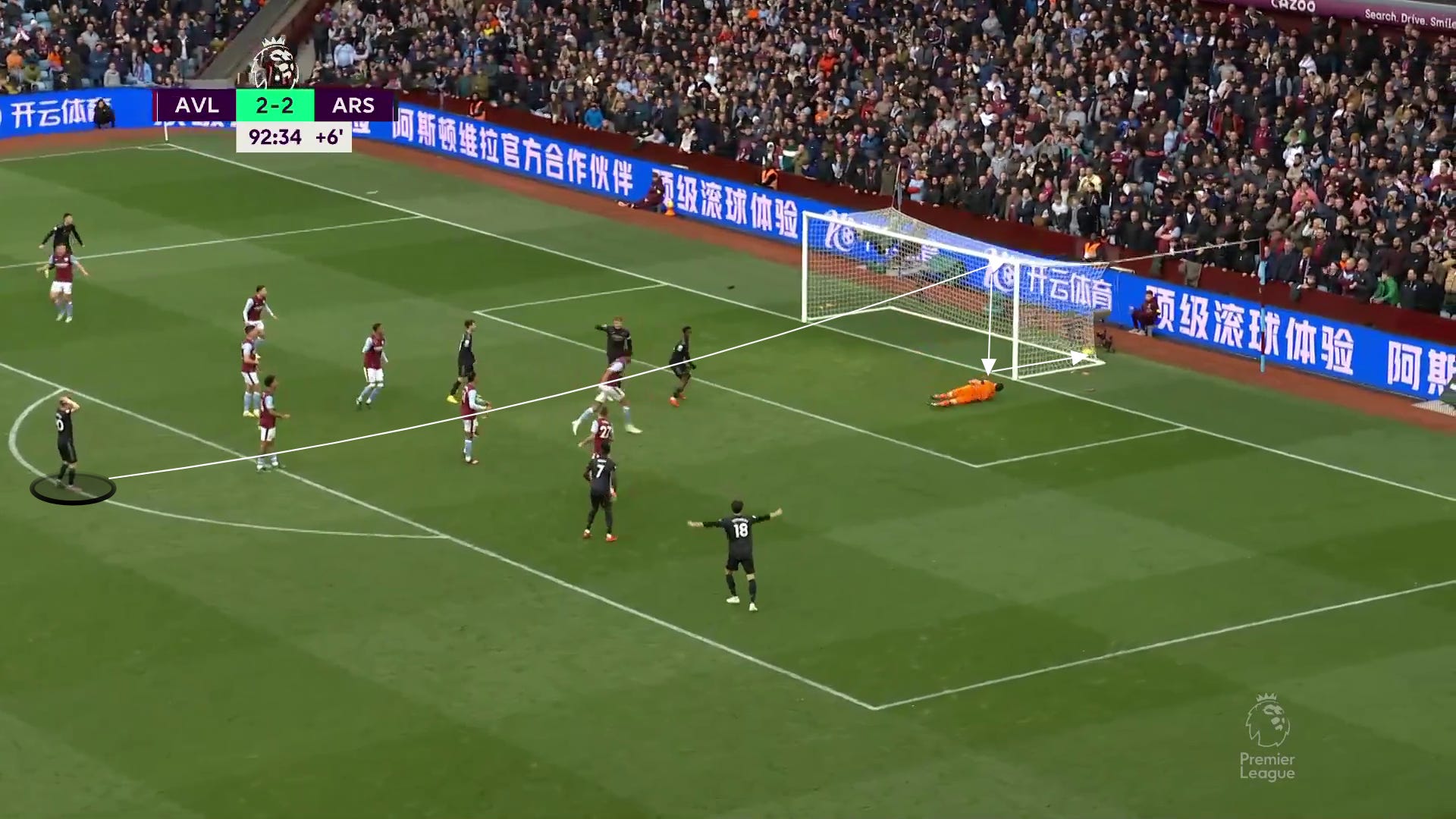
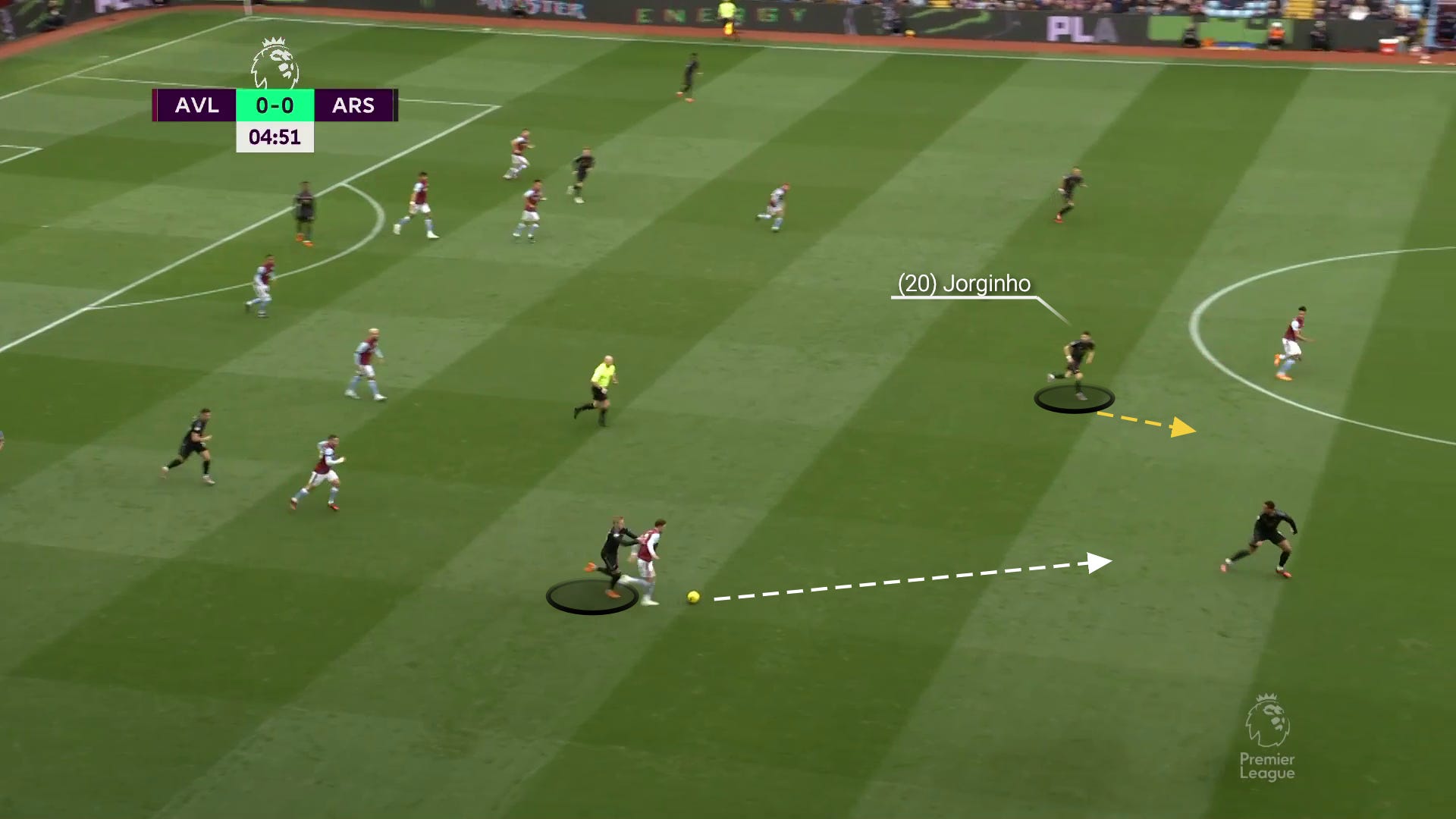




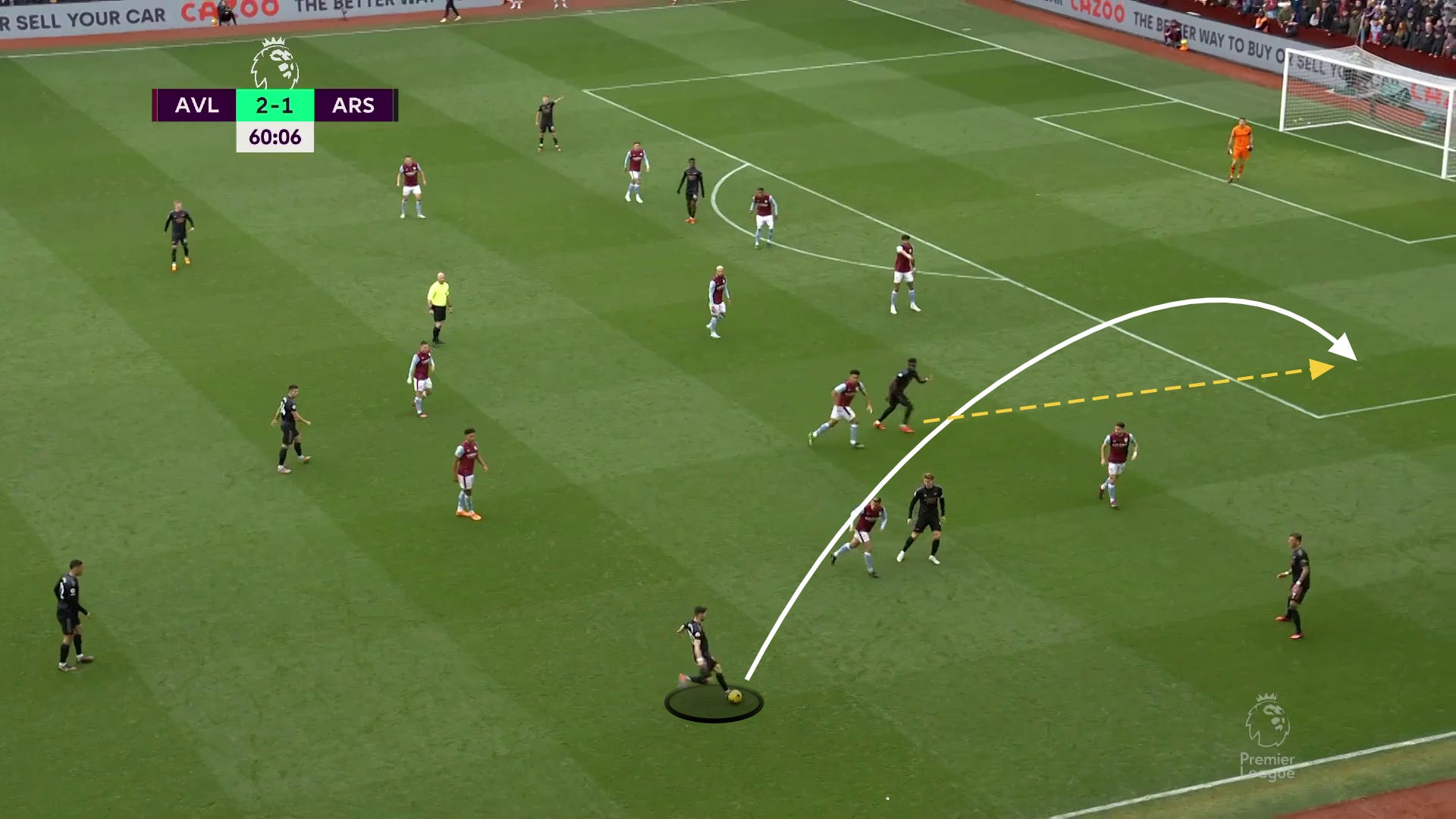









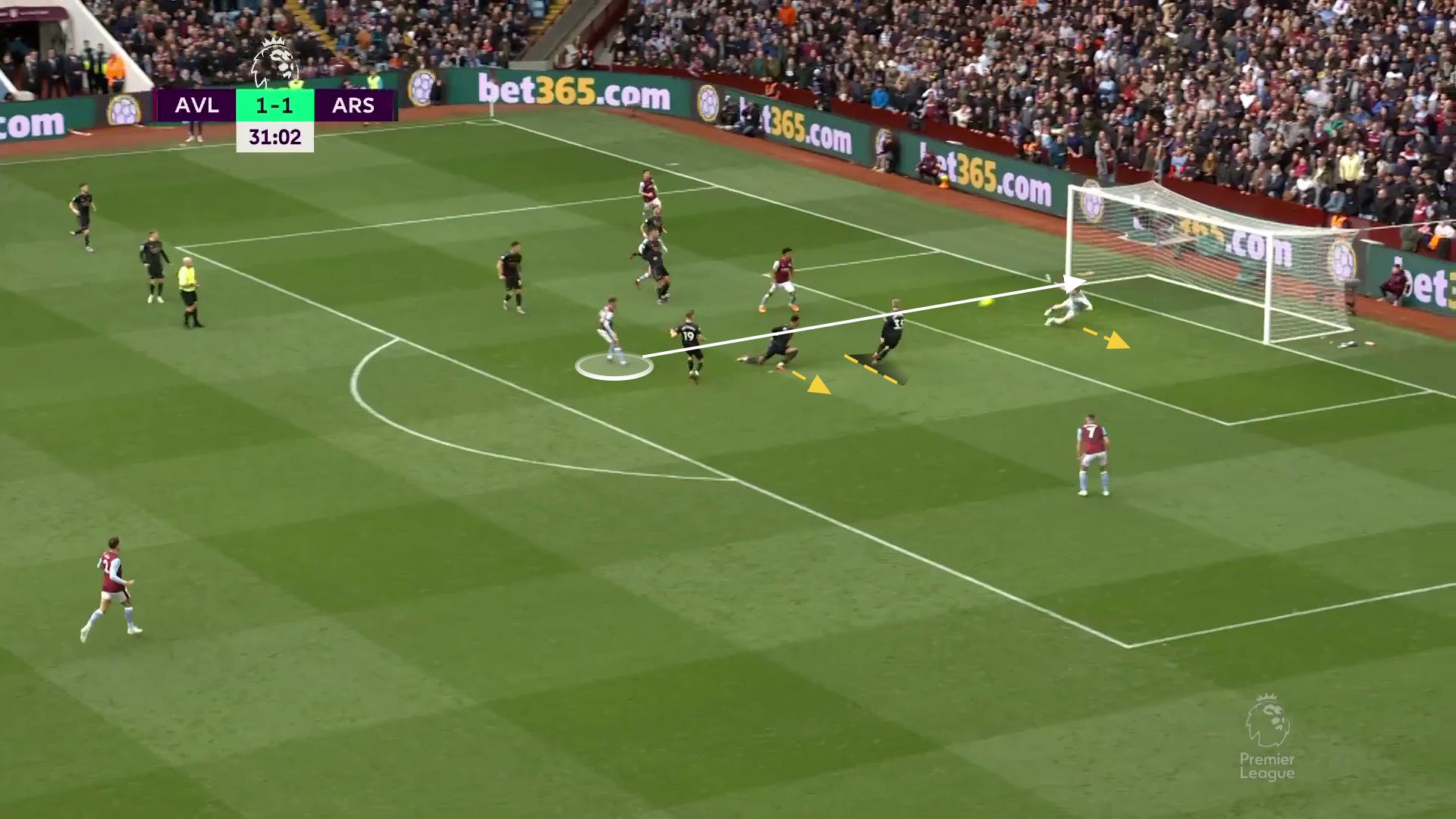

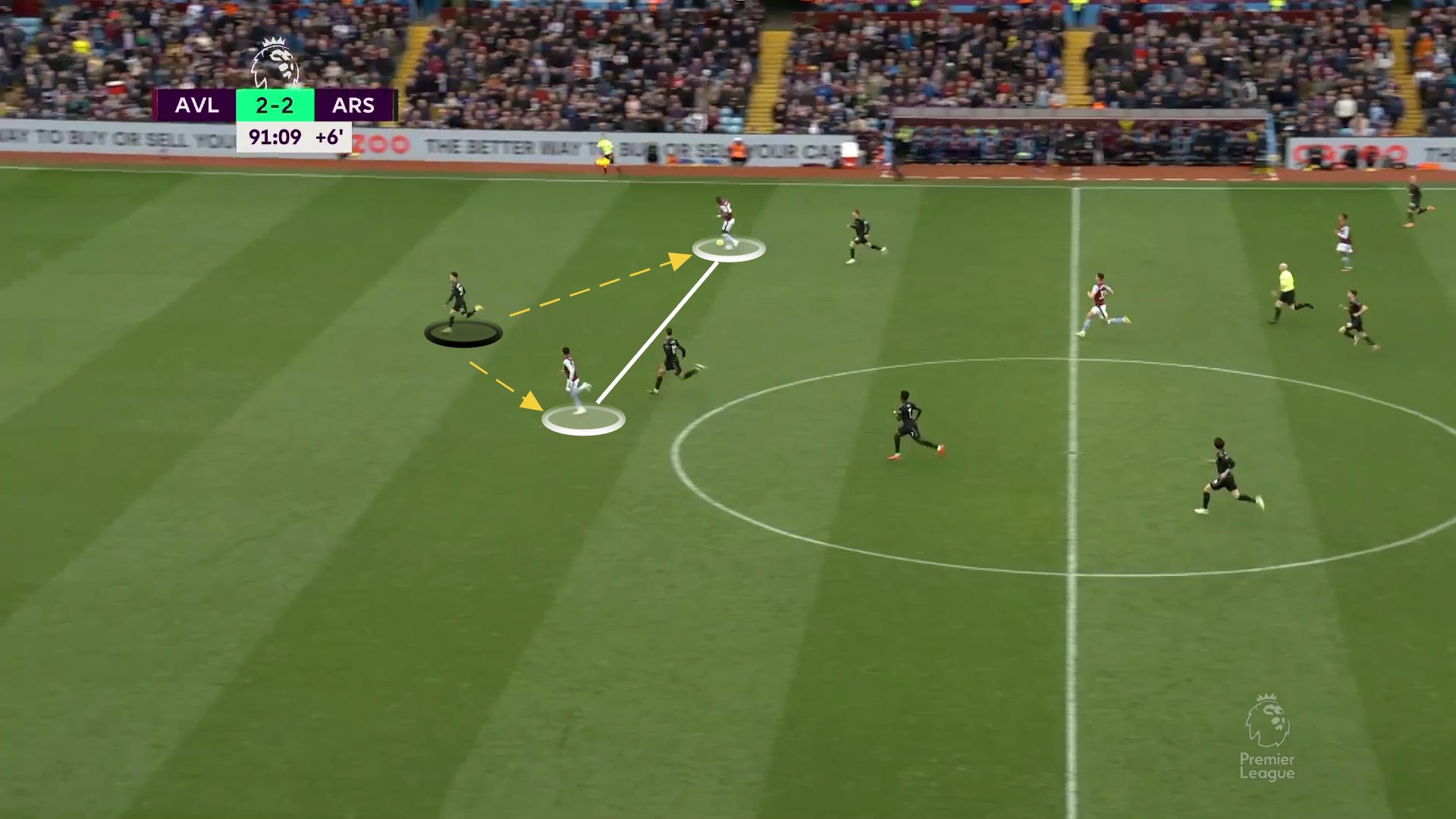

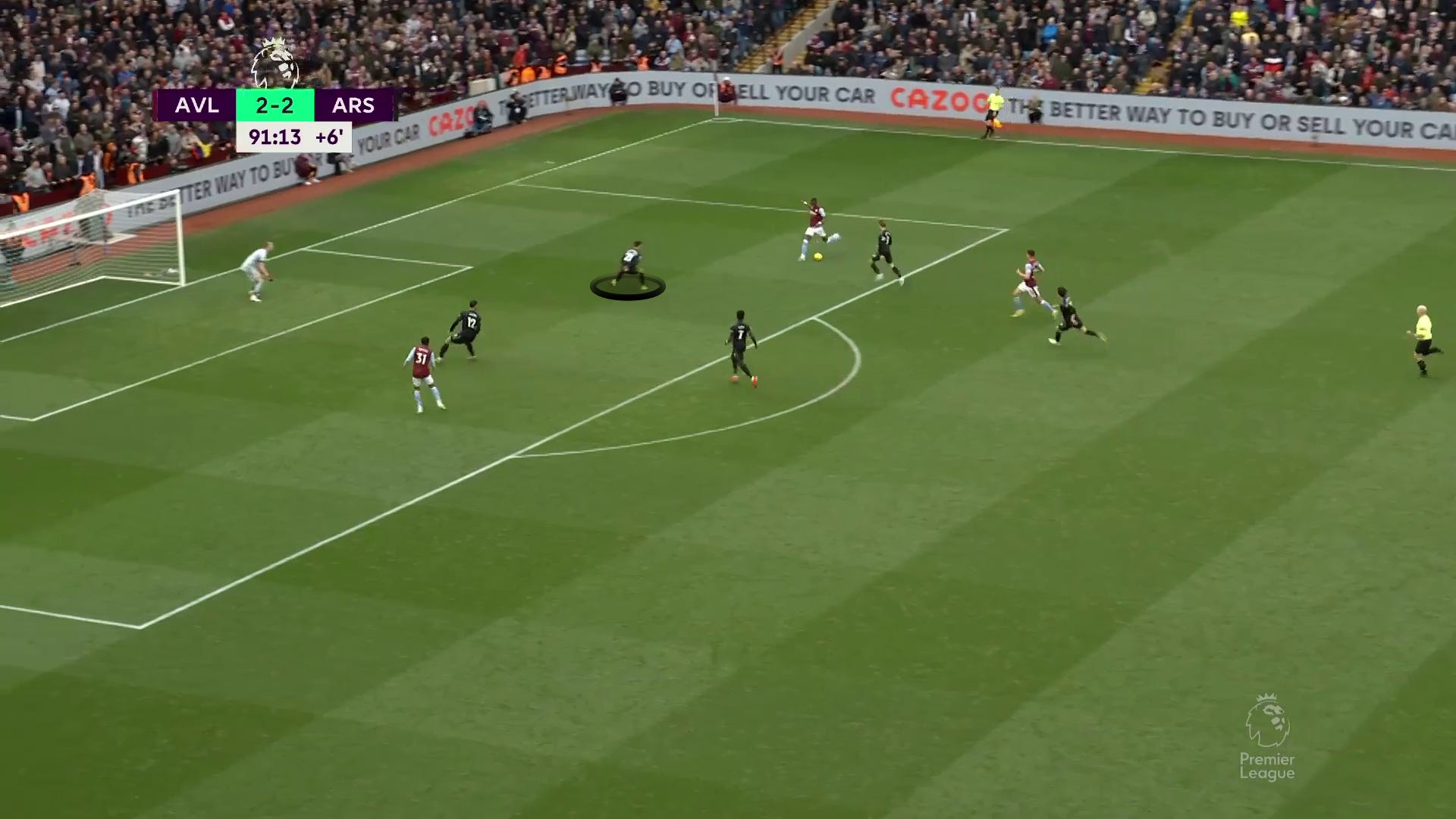
Love these
Always looking forward to these now! Thanks so much for your tremendous insights and beautiful writing.